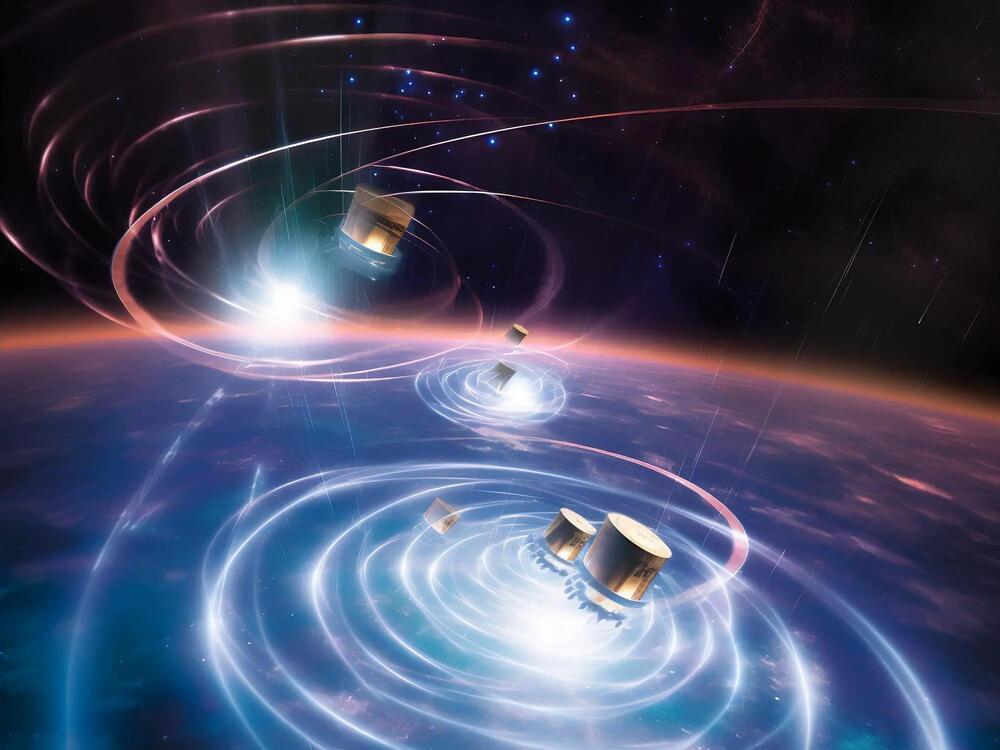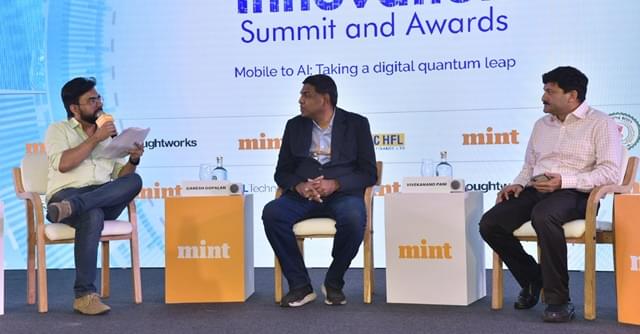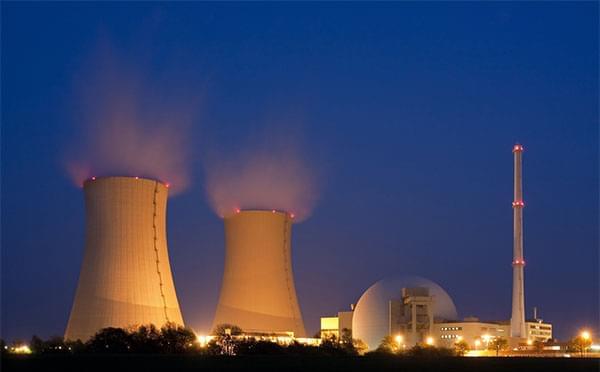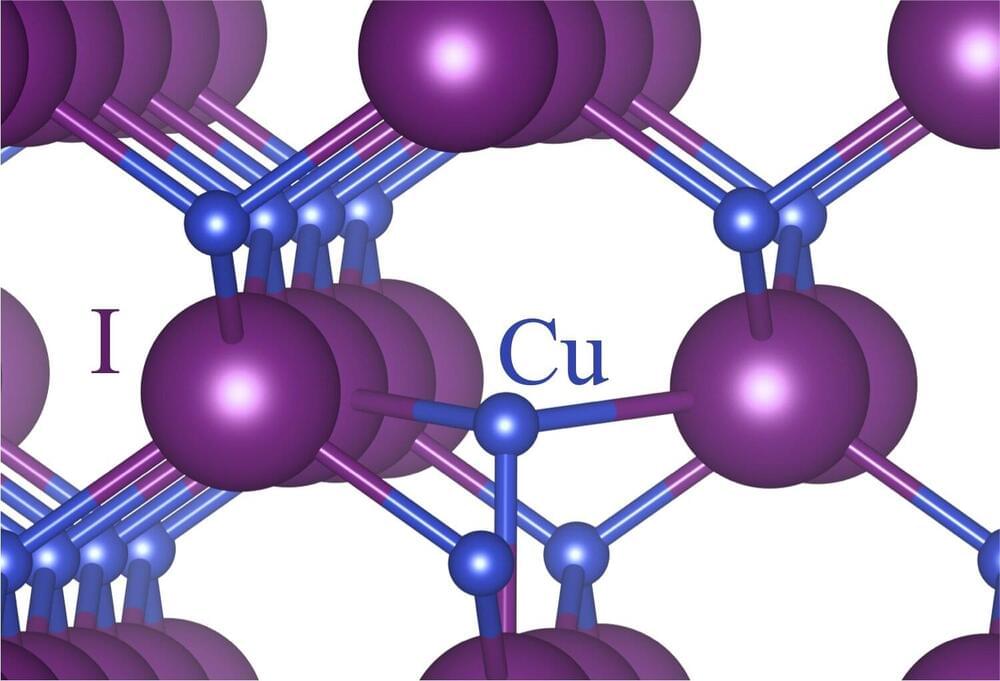Artificial intelligence-based video generation platform Synthesia has raised $90 million from investors including Nvidia, the company told CNBC exclusively.
Get the latest international news and world events from around the world.

Unveiling Quantum Gravity: New Results From IceCube Neutrino Observatory and Fermi Space Telescope
Researchers have reached a significant milestone in the field of quantum gravity research, finding preliminary statistical support for quantum gravity.
In a study published in Nature Astronomy on June 12, a team of researchers from the University of Naples “Federico II,” the University of Wroclaw, and the University of Bergen examined a quantum-gravity model of particle propagation in which the speed of ultrarelativistic particles decreases with rising energy. This effect is expected to be extremely small, proportional to the ratio between particle energy and the Planck scale, but when observing very distant astrophysical sources, it can accumulate to observable levels. The investigation used gamma-ray bursts observed by the Fermi telescope and ultra-high-energy neutrinos detected by the IceCube Neutrino Observatory, testing the hypothesis that some neutrinos and some gamma-ray bursts might have a common origin but are observed at different times as a result of the energy-dependent reduction in speed.

Leveraging cyber security for Artificial Intelligence
In the digital age, SaaS businesses have started embracing transformative technologies, such as Artificial intelligence (AI) and cloud computing. According to a research firm, the market for artificial intelligence (AI) is nearly 100 billion USD, which is expected to grow twentyfold by 2030, up to almost 2 trillion USD.
Although AI promises revolutionary advancements and cloud computing enables efficient storage and processing of massive amounts of data, their rapid adoption also raises concerns about cybersecurity. In 2021, the global cost of cybercrime was estimated to be $6 trillion.

Local language data is essential for building effective AI tools
Local language data helps automated systems understand and respond to users in their own language and can help businesses reach their target audiences more effectively, said Ganesh Gopalan, founder and CEO of AI startup Gnani.ai, during a panel discussion at the Mint Digital Innovation Summit & Awards on Friday.
“If we don’t have, firstly, content in the local language, if we can’t talk to machines in the local language, then it is not possible for no system to work and, you know, reach the right audience,” said Gopalan.
The panel discussion also included Vivekanand Pani, Co-founder, Reverie Language Technologies, who agrees that to develop an AI tool for any language, the availability of data is crucial.

Renewables surpass new nuclear reactor in capacity growth: Utility-scale solar and wind outpace Vogtle-3 in Q1 of 2023
Based upon a review by the SUN DAY Campaign of data recently released by the Federal Energy Regulatory Commission (FERC), utility-scale solar and wind have apparently each added more new electrical generating capacity during the first four months of 2023 than the new Vogtle-3 nuclear reactor that just came on-line after nearly 14 years of construction and major cost overruns.
FERC had earlier reported in its monthly “Energy Infrastructure Update” report for December 2022 that installed U.S. utility-scale solar generating capacity had reached 80,400 megawatts (MW) by the end of last year.
However, in its most recent report, with data through April 30, 2023, FERC cites 85,790-MW of installed solar generating capacity… and that does not include new small-scale distributed PV systems. Meanwhile, FERC listed 143,280-MW of installed wind generating capacity at the end of 2022 but, four months later, that figure had been increased to 146,900-MW.


Four-legged robot traverses tricky terrains thanks to improved 3D vision
Researchers led by the University of California San Diego have developed a new model that trains four-legged robots to see more clearly in 3D. The advance enabled a robot to autonomously cross challenging terrain with ease—including stairs, rocky ground and gap-filled paths—while clearing obstacles in its way.
The researchers will present their work at the 2023 Conference on Computer Vision and Pattern Recognition (CVPR), which will take place from June 18 to 22 in Vancouver, Canada.
“By providing the robot with a better understanding of its surroundings in 3D, it can be deployed in more complex environments in the real world,” said study senior author Xiaolong Wang, a professor of electrical and computer engineering at the UC San Diego Jacobs School of Engineering.
Watch a drone swarm navigate a bamboo forest
By arming each drone with its own sensors, researchers have created the first swarm capable of navigating a wide environment.

Heat transport in energy materials: Study clarifies fundamental microscopic mechanisms
The NOMAD Laboratory researchers have recently shed light on fundamental microscopic mechanisms that can help with tailoring materials for heat insulation. This development advances the ongoing efforts to enhance energy efficiency and sustainability.
The role of heat transport is crucial in various scientific and industrial applications, such as catalysis, turbine technologies, and thermoelectric heat converters that convert waste heat into electricity.
Particularly in the context of energy conservation and the development of sustainable technologies, materials with high thermal insulation capabilities are of utmost importance. These materials make it possible to retain and utilize heat that would otherwise go to waste. Therefore, improving the design of highly insulating materials is a key research objective in enabling more energy-efficient applications.